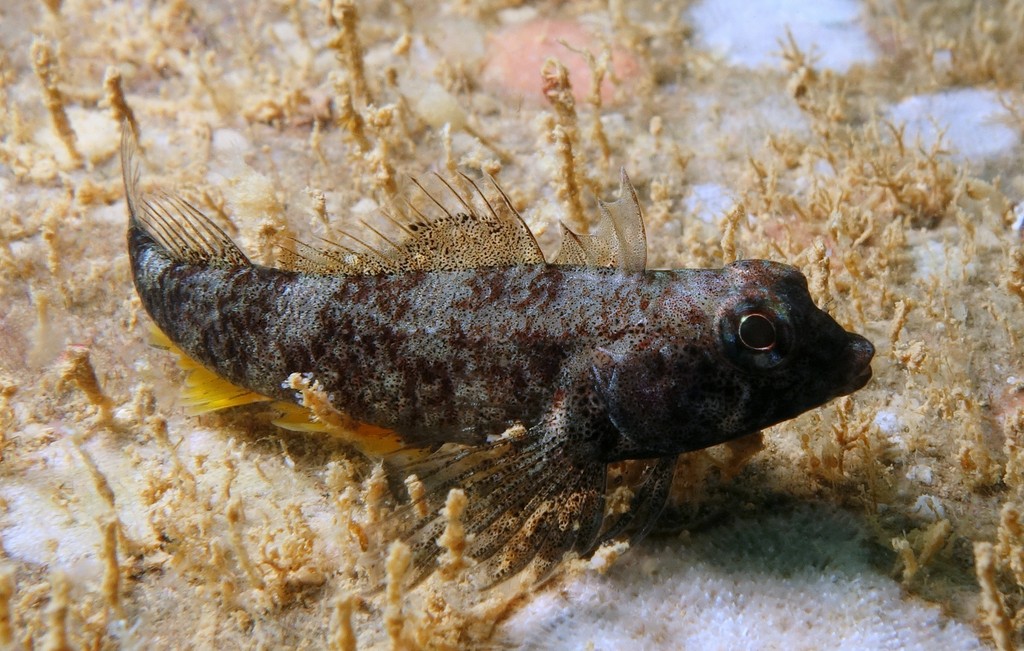ENNEAPTERYGIUS NIGER - (FRICKE, 1994)
Picture courtesy of: Yves Thévenet
New Caledonian black triplefin, Black triplefin, 黑色双线鳚,
Description
First dorsal spines (total): 3; Second dorsal soft rays (total): 9-12 (usually: 10); Third dorsal soft rays (total): 8-10 (usually: 8); Anal spine: 1; Anal soft rays: 17-20 (usually: 17); Lateral scale rows: 32-37 + 1 (usually: 34 + 1); Transverse scale rows: 4 + 1 + 4; Lateral line scales: 13-19 + 17-22 (usually: 16 + 19); Two median mandibular pores, mandibular pore formula: 4 + 2 + 4. Pupil large; Occipital branch I-shaped, simple. Lateral line consisting of an anterior series of 15-18 tubular pored scales reaching to about 4th-5th anal fin ray. First dorsal fin medium-sized in both sexes, first spine in the male about as long as first spine of second dorsal fin, in the female slightly shorter. Anal fin beginning on a vertical through 6th membrane of second dorsal fin (about below 14th lateral line pore). Pectoral fin reaching about to 6th anal fin membrane. Max. length: 3.2 cm SL male, 2.9 cm SL female. Depth range: 0 - 15 m.
Color
A black band on the caudal peduncle, about 9 basal dark spots on the female's anal fin, and a overall blackish coloration of the male with anal fin bright yellowish orange. Anal fin withish, in the female.
Etymology
Enneapterygius: from Greek, ennea = numeral nine + from Greek, pterygion = little fin. Referring to nine fins (3 dorsal, 2 pectoral, 2 ventral or pelvic, 1 anal, 1 caudal).
niger: from Latin, niger = black. Referring to overall blackish coloration of males.
Original description: Enneapterygius niger Fricke, 1994 - Type locality: Grande Terre, Baie de Saint-Vincent, 21°57'24"S, 165°59'54"E, New Caledonia, depth 2-8 meters, collected by M. Kulbicki & R/V "Alis", 30 Mar. 1989.
Distribution
Western Pacific: Philippines, Taiwan, Vanuatu, New Caledonia and Pohnpei (Federated States of Micronesia).
Biology
Adults inhabit rock and coral reefs, including intertidal pools. Eggs are hemispherical and covered with numerous sticky threads that anchor them in the algae on the nesting sites. Larvae are planktonic which occur primarily in shallow, nearshore waters.
Similar species
Enneapterygius cheni (Wang, Shao & Shen, 1996) - Reported from Tropical Western North Pacific: Micronesia to Taiwan.
Last update: 12, September 2024
